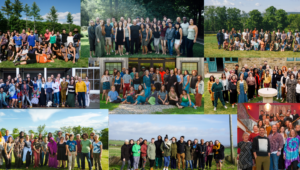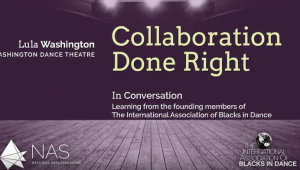Editor’s Note: This is one of a series of posts from guest bloggers discussing topics from this week’s Salzburg Global Forum for Young Cultural Leaders. Leaders from around the world are coming together to discuss issues that are critically important to the cultural sector − how do we create and articulate our value, what is global and what is local today and what is the role of arts organizations in society.
Art plays many roles in society and, at different times, can speak to issues in areas such as religion, science, politics, and history. Whether introducing an international form of movement to the dance scene, putting a modern spin on Mozart or Bach, or providing a visual interpretation of the effects of war, the arts can provide thought-provoking commentary and innovative perspectives on a vast array of global ideas. Arts organizations should, therefore, play the part of illuminator, conveying the power of art in the discourse of complex subjects. In doing so, arts organizations can exist to broaden the horizons of their communities by encouraging analytical thinking and fostering understanding of different opinions and ideas. Moreover, arts organizations can be more participatory in their own communities by bringing art into the public.
People often forget the significance of art in the discourse of social, cultural, and global concerns. Arts organizations need to emphasize art’s contribution to, and its relevance in, civil society. In calling attention to censorship in the arts, for example, arts organizations can lead communities to understand the persuasive power of art throughout time. Many movements throughout history have sought to destroy subversive or scandalous art or use art to further different religious or political agendas. The iconoclasm enforced by Byzantine authorities prevented artists from creating representations of religious figures. Hitler not only destroyed modern art, which he found to be degenerate and threatening, but also used visual images, including documentary film, as propaganda for Nazism. As a recent example, the Chinese government detained the contemporary artist Ai Weiwei for tax evasion, although the real reason is believed to be that Ai’s politically charged art criticized Chinese authority. Ironically, these attempts to squash the arts have merely shown that art reflects the deeper preoccupations of its society. Past and present authorities have perceived the arts as threats since the arts clearly have the power to spark ideas and challenge prevailing opinions. It is the role of arts organizations to maximize their potential as a source of influence in society.
Arts organizations can assume the role of illuminator through various means. In keeping with the theme of educating the public about censorship, art institutions can stage previously banned dance performances, hold a concert of music that has historically been considered too radical, or exhibit works of art that at one time had instigated controversy. The presentation of this kind of art invites audiences to think about what qualities of the art may have been contentious and why. Viewing the art of Robert Mapplethorpe, for instance, and questioning why the Corcoran Gallery of Art banned an exhibition of his works in 1989, the public might understand that Mapplethorpe’s overtly sexual depictions caused a stir and made people uncomfortable. In seeing Marcel Duchamp’s “The Fountain,” even though many people may not be as shocked to see something like this in a museum today, the public may realize that the idea of the ready-made and the absence of the artist’s touch scandalized people in the early 20th century. Moreover, this kind of provocation forces the audience to understand that art does not exist in a vacuum and is indeed reflective of its society. By reflecting on history, government, civil rights, feminism, sexual liberation, and countless other socially pertinent matters, art can cause controversy and, at the same time, expose people in communities to various viewpoints. Arts organizations can prove that both art and their own institutions are relevant in society.
While they should invite their communities to think about the significance of the arts and encourage them to broaden their perspectives on social matters, arts organizations should also strive to do this in a way that best engages their audiences. They can achieve this by playing a participatory role in their communities and bringing the arts into the public. In addition to utilizing their own spaces, whether white-walled galleries or large music halls, arts organizations should extend the arts beyond these boundaries. Performing plays in parks, installing outdoor sculptures, or even creating exhibitions for airport lobbies, arts organizations can be on an equal ground with their communities by sharing physical spaces. Furthermore, encountering a piece of art in a familiar setting might make audiences feel more at ease. In other words, art becomes approachable and digestible in a comfortable environment. Members of a community may even find it easier to be captivated by the messages expressed by an arts organization.
The role of arts organizations in civil society is constantly evolving. However, in order to be significant in today’s world, arts organizations need to invite their communities to think about the arts and their relevance to social issues in a broader, more global perspective. In this way, arts organizations can both bolster the importance of the arts and assert their own relevance in society.


